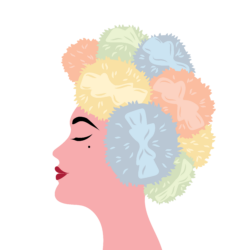Some people walk into a room and take up space. Others adjust, monitoring their tone, shifting their style, and adapting to fit the mood. These are the human chameleons. In beauty, this might look like someone who can wear any trend, change their aesthetic with ease, or match their look to every occasion.
Adaptability can be a superpower. It makes you versatile, intuitive, and often deeply creative. But when that flexibility becomes your default mode, it can quietly disconnect you from what’s true for you.
Over time, shape-shifting for others can lead to confusion. You might find yourself asking: Do I like this look, or do I just know it’s likable?

Clients often sit in my chair and realize they’ve been wearing versions of themselves that reflect their partners, their workplaces, or their social circles- not their own preferences.
That’s the cost of constant adaptation: you become fluent in others, but forget your own language.
Makeup is often the medium where this plays out. When it’s used with intention, it’s expressive and grounding. But when it’s driven by fear of rejection or the pressure to fit in, it becomes a form of self-erasure.
Being a chameleon isn’t wrong. It’s wise, especially if you learned early on that fitting in meant being safe. But now, you get to ask different questions. You get to experiment with beauty that feels like a return to yourself, not a reaction to others.
